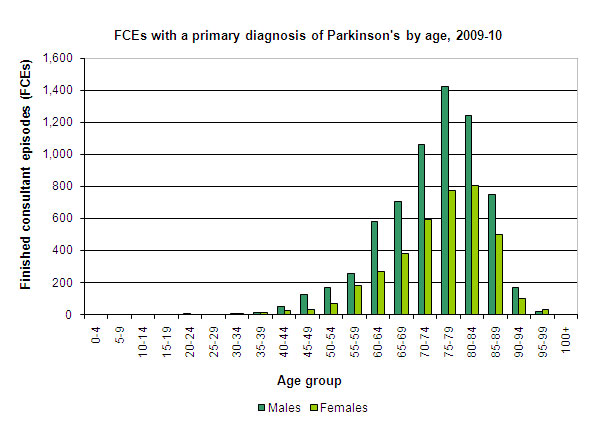IN THIS SITE...

- NHS Choices: Parkinson's
- Parkinson's Disease Society
- Inpatient data
- Self Service
HES on... Parkinson's
Parkinson's affects about 120,000 people in the UK. This article gives an overview of the disease and highlights related 2009-10 HES data.
What is Parkinson's?
Parkinson's disease (Parkinson's) is a progressive, neurological condition that has three main symptoms (although other symptoms can also be present, such as tiredness):
- a tremor
- muscular rigidity or stiffness
- bradykinesia (slowness of movement).
The severity and presence of symptoms and the progression of the disease varies from patient to patient.
Who does it affect?
According to NHS Choices, Parkinson's affects about 120,000 people in the UK. Symptoms usually appear in patients aged 50 and over, a finding that HES data supports (see graph below).
 |
HES facts and figures
HES data for Parkinson's (primary diagnosis code G20 in ICD-10) show that in 2009-10:
- just over half (55 per cent) of hospital admissions for Parkinson's are emergency admissions, rather than from waiting lists
- the average (mean) time that patients remained in hospital was 23 days
- over two thirds of patients admitted to hospital for Parkinson's don't undergo procedures. Of those that did, the three most common procedures carried out were:
- diagnostic imaging of central nervous system (U05 in OPCS-4.4)
- neurostimulation of brain (A09 in OPCS-4.5)
- rehabilitation for neurological disorders (U51 in OPCS-4.4).
- it was responsible for 10,405 episodes of admitted patient care, accounting for 139,346 occupied bed days
- there has been a 14% increase in FCEs over the last decade
- 63% of FCEs are for men.
More information on this topic is available from NHS Choices here.

